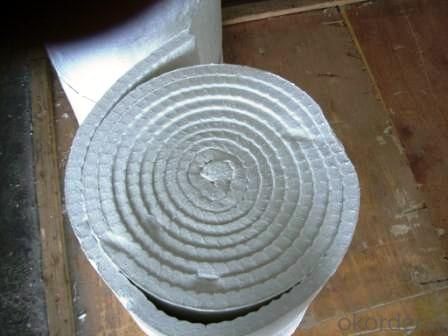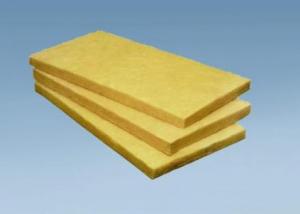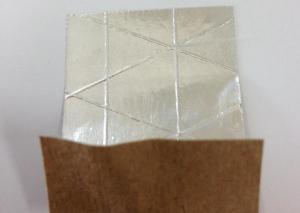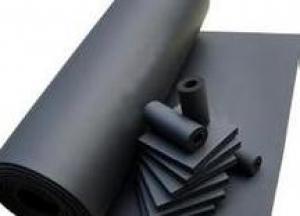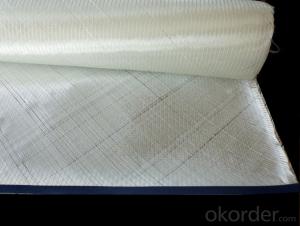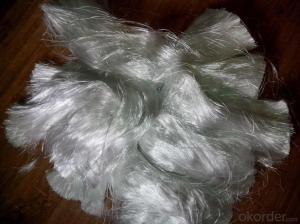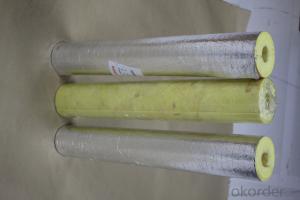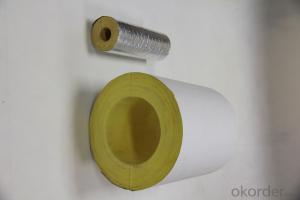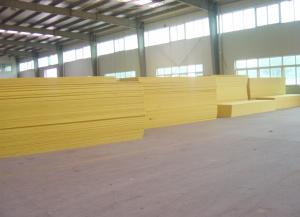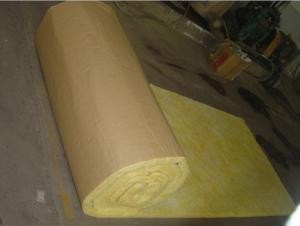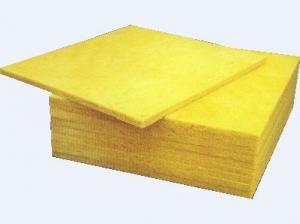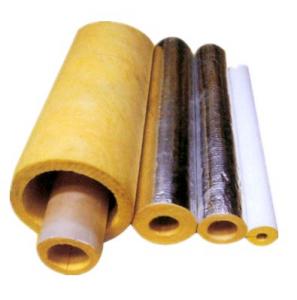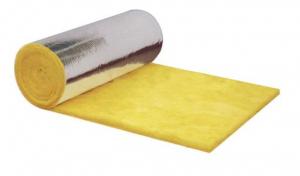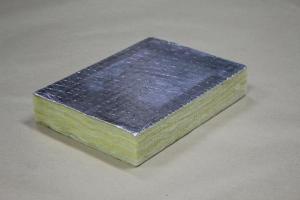High Purity Glass Wool Ceramic Fiber from Clay Clinker
- Loading Port:
- China main port
- Payment Terms:
- TT OR LC
- Min Order Qty:
- 50 m
- Supply Capability:
- 5000 m/month
OKorder Service Pledge
OKorder Financial Service
You Might Also Like
Technical Data of ceramic fiber cotton
Type | Common | Standard | High Purity | High-aluminium | Zirconium | |
Classification temperature (°C) | 1100 | 1260 | 1260 | 1360 | 1430 | |
Working Temperature (°C) | <1000< span=""> | 1050 | 1100 | 1200 | 1350 | |
Color | white | white | white | white | white | |
Fiber diameter (um) | Blown | 2-3 | 2-3 | 2-3 | 2-3 | 2-3 |
Needled | 3-4.5 | 3-4.5 | 3-4.5 | 3-4.0 | 3-4.0 | |
Chemical composition | AL2O3 | 44 | 46 | 47-49 | 52-55 | 39-40 |
AL2O3+SIO2 | 96 | 96 | 99 | 99 | - | |
AL2O3+SIO2+ZrO2 | - | - | - | - | 99 | |
ZrO2 | - | - | - | - | 15-17 | |
Fe2O3 | <1.2< span=""> | <1.0< span=""> | 0.2 | 0.2 | 0.2 | |
Na2O+K2O | ≤0.5 | ≤0.5 | 0.2 | 0.2 | 0.2 | |
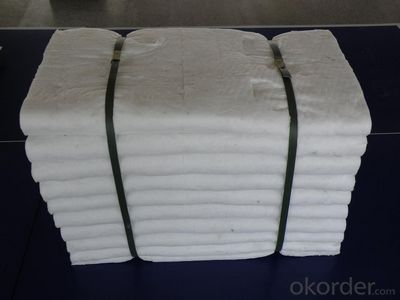
Remarks: The data above is for reference. The Max. temperature depends on the using conditions.
Product Description:
CeramicLooseFiberis made by the melted raw materials at high temperature through resistance furnace, before being blown or spun into fiber. As a neutral and acidic material, except reaction with the strong acid-alkali,refractoryceramic fiber won’t be eroded by other weak alkali, weak acids, or water, oil, steam, or be infiltrated with lead, aluminum or copper, featuring excellent flexibility and elasticity. Ceramic fiber is of smaller density, more than 75% lighter than insulation brick lining or 90% -95% lighter than lightweight castable lining, with thermal conductivity co-efficient to be 1/8 of the lightweight clay brick or 1/10 of lightweight heat-resistant lining (castable), and heat capacity to be 1/10 of both lightweight insulation lining and lightweight castable lining, thus to greatly lower energy loss and deliver significant energy-saving regenerative effects. Meanwhile, the ceramic fiber features a simple construction with no need of baking oven, shortened construction cycle and easy installation.
Low heat capacity and low thermal conductivity;
Excellent chemical stability;
Excellent thermal stability, resistance to pulverization at high temperature;
With no binders or corrosive substances;
Excellent sound absorption
Typical Application:
Raw material for fiber blanket, board products;
Raw material for fiber textile products;
Fillings for wall lining gap in high temperature furnace, heating device;
Raw material wet processed products;
Fiber spraying;
Castables;
Raw material for coatings;
Insulation fillings for corner and complex space.
- Q: What is the difference between imported glass wool and rock wool?
- Rock wool: It is also known as rock cotton, which belongs to mineral wool. It is a fluffy, short and fine fiber made up of natural rocks and minerals and more as the raw materials. Rock wool, whose main raw material are natural rocks like basalt, gabbro, dolomite, iron ore, bauxite and more, is an inorganic fiber made by melting at high temperatures and fibering. Rock wool can serve as the insulation material with ablation resistance and high temperature resistance, the sound-absorbing material and insulation material of buildings and equipment, and the reinforcing material of cement product and rubber for sustituting natural asbestos, and high temperature sealing material, high-temperature filtering material and high-temperature catalyst carrier. 1. Insulation properties: Good thermal insulation is the basic property of rock wool and mineral cotton products. 2. Combustion performance. 3. Sound insulation performance: Rock wool and mineral cotton products have excellent sound insulation and sound absorption performance. Glass wool is categorized into glass fiber, which is a manmade inorganic fiber. Glass wool is a material which fibering melting glass to form cottony shape. Its chemical composition belongs to the classification of glass, being an inorganic fiber. So, it is good shaped with small volume density, low thermal conductivity, good thermal insulation and sound absorption properties, great corrosion resistance as well as stable chemical performance.
- Q: If the glass wool is used for thermal insulation outside seamless steel tube, should the pipe be rust-proof and sprayed paint?
- It doesn't matter if you odn't brush rust-proof paint and ready mixed paint. If you have brushed rust-proof paint on seamless steel tube, it is OK without ready mixed paint, but it will shorten the operation life of the steel pipe.
- Q: Are fireproof glass wool and centrifugal glass wool the same?
- Although both of which are glass wool, there are main three types of products involved. Centifugal glass wool includes hydrophobic glass wool and ordinary glass wool. Centrifugal glass wool is produced from centrifugal injection. The centrifugal glass wool you said is only a general name, and it also belongs to centrifugal glass wool material.
- Q: Is the glass wool used in curtain wall the thermal insulation wool?
- No,it isn't.
- Q: What are the requirements for filling the glass wool insulation materials?
- It depends on design requirements, local climate and budget.
- Q: What's the types of glass wool points? do they have the same sound insulation effect?
- Mineral wool and rock wool basically
- Q: What are the differences between glass wool felts and rock wool board in terms of appearance, and how to distinguish them?
- First, the color. environmental glass wool is while, while rock wool is dark.
- Q: What is the construction process of external wall glass?wool?board?
- First, fix the glass wool to the wall with insulation supporting pins to prevent falling. A vapor barrier must be built on the surface of glass wool in order to prevent moisture condensation in the air within the glass wool, which may lead to the decrease of thermal insulation performance.
- Q: what is the specification of glass wool sound-absorbing board?
- General specifications include 600 * 600600 * 500 * 1200-1200/12000300/400 mm thickness is usually 14 to 22 mm. . But different production capacity depends on the specific manufacturer, the manufacturer without certain production capacity can't do the bar plate or reach the thickness.
- Q: What is the density of glass wool?
- Glass wool, a man-made inorganic fiber, belongs to a kind of glass fiber. It is a spongiform material made through fibration of melten glass. It is an inorganic fiber whose chemical components belong to glass, having good formability, low bulk density, low thermal conductivity, good thermal insulation and sound absorption, corrosion resistance and chemical stability. For centrifugal glass wool whose thickness exceed 5 cm and unit weight is 16Kg / m3, the sound absorption coefficient of low frequency125Hz is about 0.2, and that of middle and high frequency is close to 1. When the thickness continues to increase from 5cm, the low-frequency sound absorption coefficient also increase gradually. When the thickness is greater than 1m or more, 125Hz low frequency sound absorption coefficient will also be close to 1. Thicknesses of acoustic glass wools often used in architectural acoustics are 2.5cm, 5cm, 10cm, and unit weights are16,24,32,48,80,96,112kg / m3. centrifugal glass wool whose thickness is 5 cm and unit weight is 12-48kg / m3 is usually used.
Send your message to us
High Purity Glass Wool Ceramic Fiber from Clay Clinker
- Loading Port:
- China main port
- Payment Terms:
- TT OR LC
- Min Order Qty:
- 50 m
- Supply Capability:
- 5000 m/month
OKorder Service Pledge
OKorder Financial Service
Similar products
Hot products
Hot Searches



